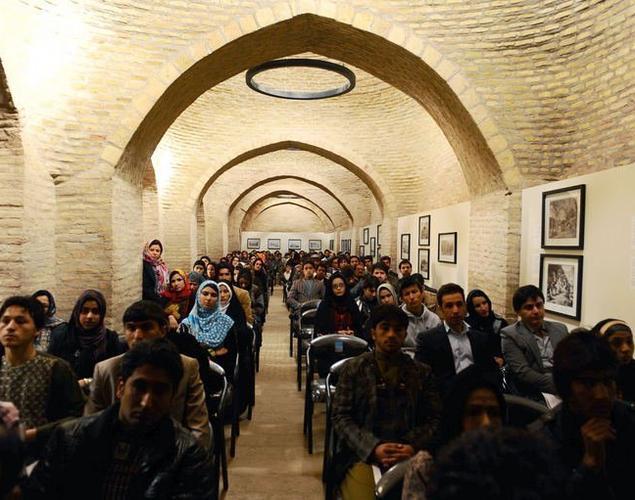November 10, 2014
Before Narendra Modi became prime minister, it was a settled trope amongst commentators to interrogate a supposed analogy with Ronald Reagan and Margaret Thatcher.

November 10, 2014
Before Narendra Modi became prime minister, it was a settled trope amongst commentators to interrogate a supposed analogy with Ronald Reagan and Margaret Thatcher.

To supporters, Modi would emulate these free market reformers—idea politicians as George Schultz dubbed them—and complete the unfinished business of economic reforms in India, jump-starting both the economy and the aspirations of millions. To critics, Reagan—and especially Thatcher—represented warning signs of the possible dangers of over-centralization and the putatively polarizing impact on society of politicians with strong views on what needed to be done and on how to do it (cue the bitter acrimony over the notorious coal miners’ strike).
Now that he is prime minister, all of those who had hoped (or feared) that Modi would unleash a series of big bang economic reforms and are disappointed (or relieved) that he has not, are groping for new analogies, having discovered that the Indian political economy is, after all, different from that of the US or the UK.
Perhaps it is the centrality of the US and UK experiences for elite members of the commenting class—both in India and abroad—that has obscured a much more natural, and, I would argue, much more apt comparison for Modi—Stephen Harper, Prime Minister of Canada—a hypothesis I have been developing during the course of a recent series of talks trying to explain Modi’s election victory to audiences in Canada.
The superficial features of the comparison are appealing enough, beginning with the telling but little-known (both in India and Canada) fact that Harper—soon after becoming prime minister in 2006—was one of the first world leaders to reach out to Modi, who was then still very much persona non grata in Washington and London.
What is more, both Harper and Modi—self-described political outsiders who stormed the bastion—shook up a complacent consensus and established hierarchies—as much within their own parties (Harper leads the centre-right Conservative Party in Canada—an amalgam of economic and social conservatives—much like the Bharatiya Janata Party in India) as within the nations they now both lead. Both are adored by supporters and reviled by self-described liberals. In Canada and India alike, the Harper and Modi victories—scoring majority governments from a less-than-majority of the national vote share—induced angst amongst those who discovered the quirks of the first-past-the-post electoral system when it produced an outcome they did not like.
Furthering the analogy, Harper and Modi are both castigated, by fulminating critics, for allegedly distending the Westminster system, through centralizing as much power in the office of the prime minister as is constitutionally permissible, thus rendering proceedings in Parliament largely a sideshow.
Both Harper and Modi crafted election campaigns centred on the economy and governance, ousting in both cases long-ruling centre-left incumbent parties (each of which viewed itself as the natural governing party), which latterly exhibited signs of drift, fatigue, complacency, and arrogance—the Liberal Party in Canada and the Congress in India.
Following these victories, entrenched critics in both countries worried that the benign platform which swept each man to power masked their real agenda—designed to appeal to the social and religious conservatives in the political base—which they feared (with little basis in fact) would be unleashed if they received majority mandates from voters.
As icing on the cake, both leaders suspect, with some justice, that the mainstream media establishment harbours a bias against them, and prefer to interact with the press through carefully orchestrated and managed events, rather than press conferences or interviews. You get the idea: one could spool out the analogy further.
Yet, the most potent feature of the Harper-Modi analogy is that, just as with Modi, friends and foes alike of Harper were badly off the mark when they predicted that he would unveil a radical, right-wing agenda if elected with a majority (which he was in 2011, after governing with a minority from 2006).
Instead, defying the pundits, Harper has pursued a decidedly tempered and gradualist approach to managing the economy, balancing a pro-business and market-friendly ideological orientation with a healthy dose of pragmatism and moderation. By contrast, boldness and ideological direction has been seen more overtly in the realm of foreign and defence policy—such as exhibiting a more overtly pro-American and pro-Israeli stance than Canada has held in decades.
Narendra Modi going the Stephen Harper way: Photo: Petar Kujundzic/AFP © LiveMint Photo: Petar Kujundzic/AFP
The parallel with Modi’s early days in office is striking indeed.
Harper himself has dubbed the model one of relentless gradualism—an ideas-driven, centre-right agenda achieved not with a bang, but through a series of small and incremental steps that might seem inconsequential when each is taken in isolation, but which add up to a wholesale transformation when all is said and done.
Forget Thatcher, and watch Harper, for clues to Modi’s model.
Every fortnight, In the Margins will explore the intersection of economics, politics and public policy to help cast light on current affairs.
Courtesy: LiveMint















































































































